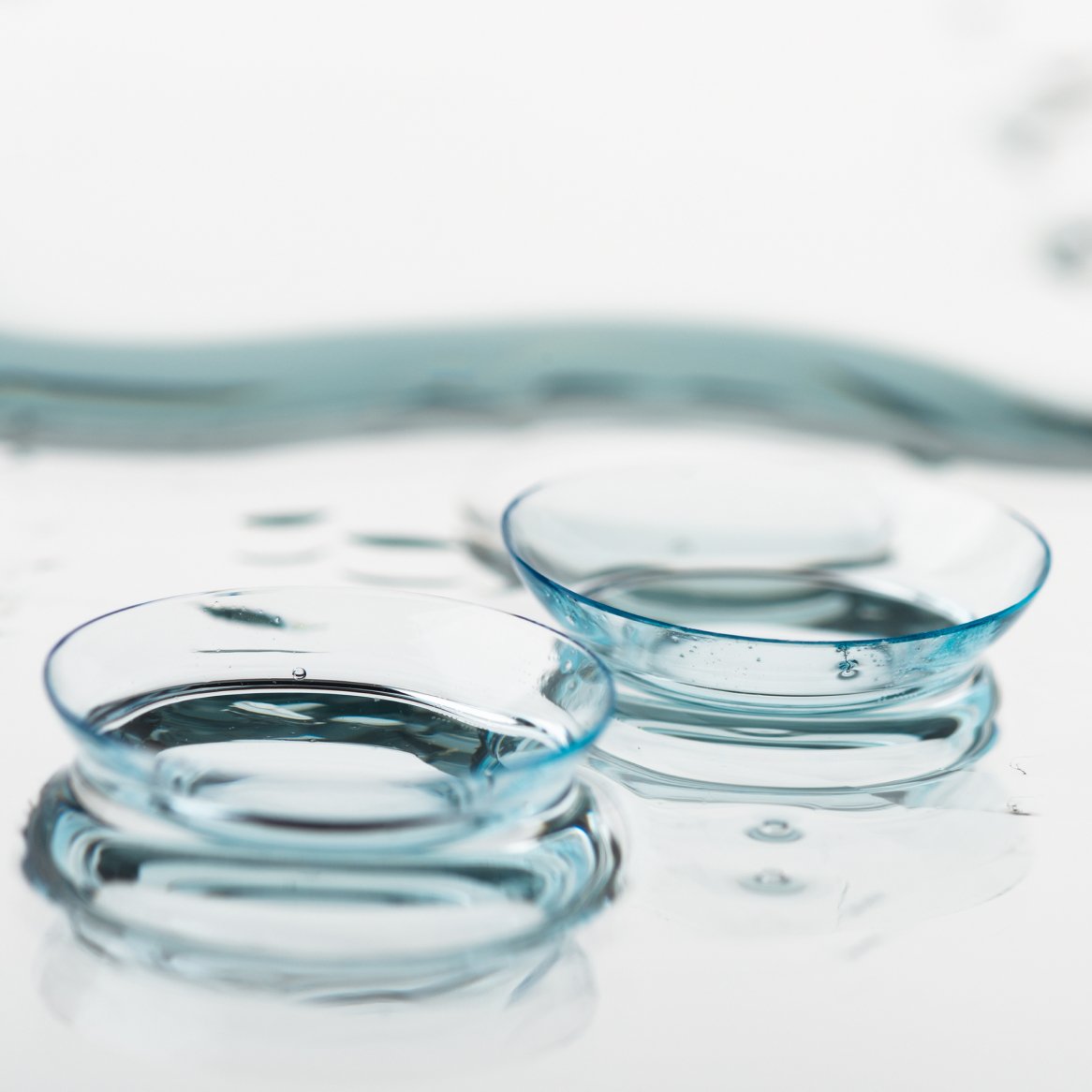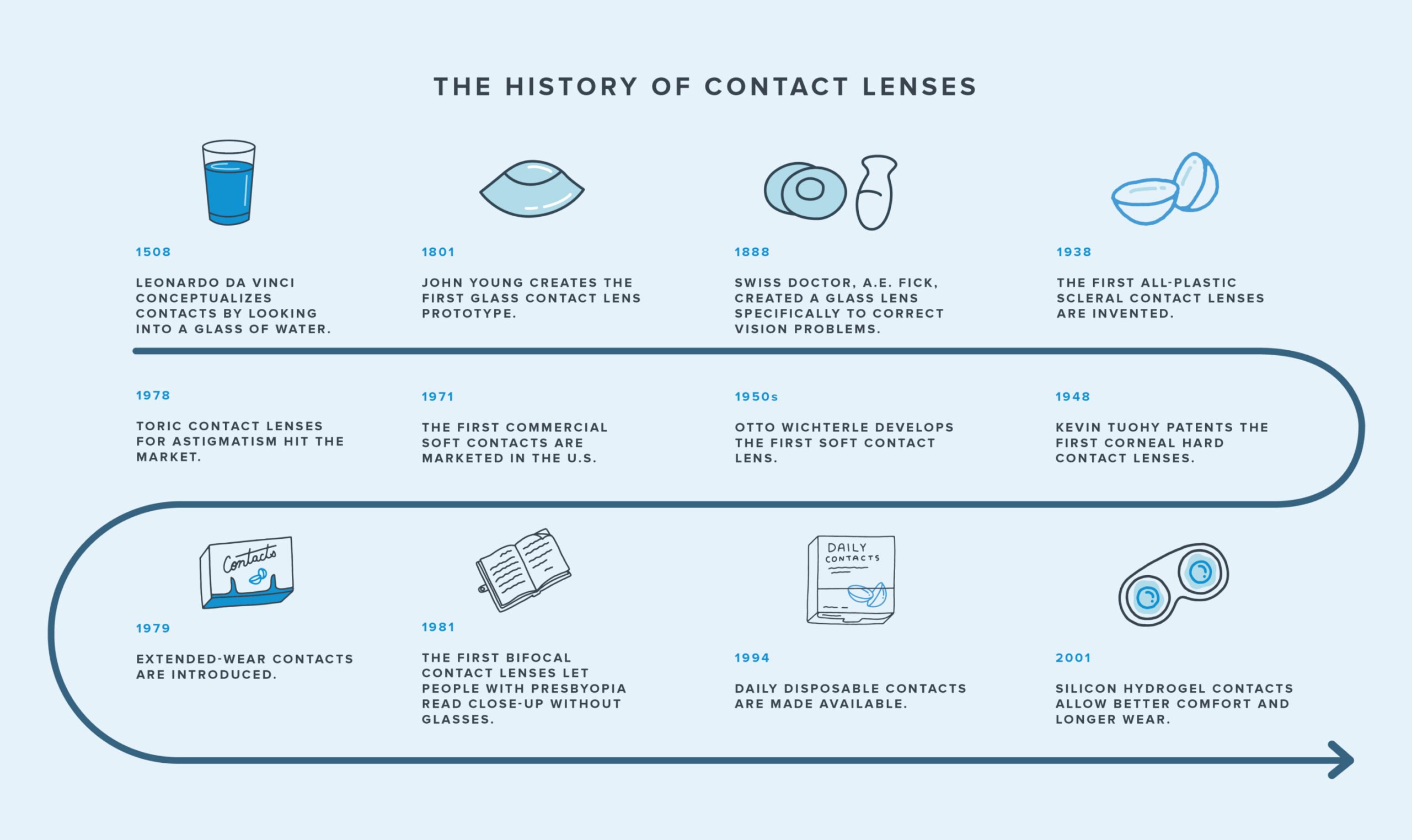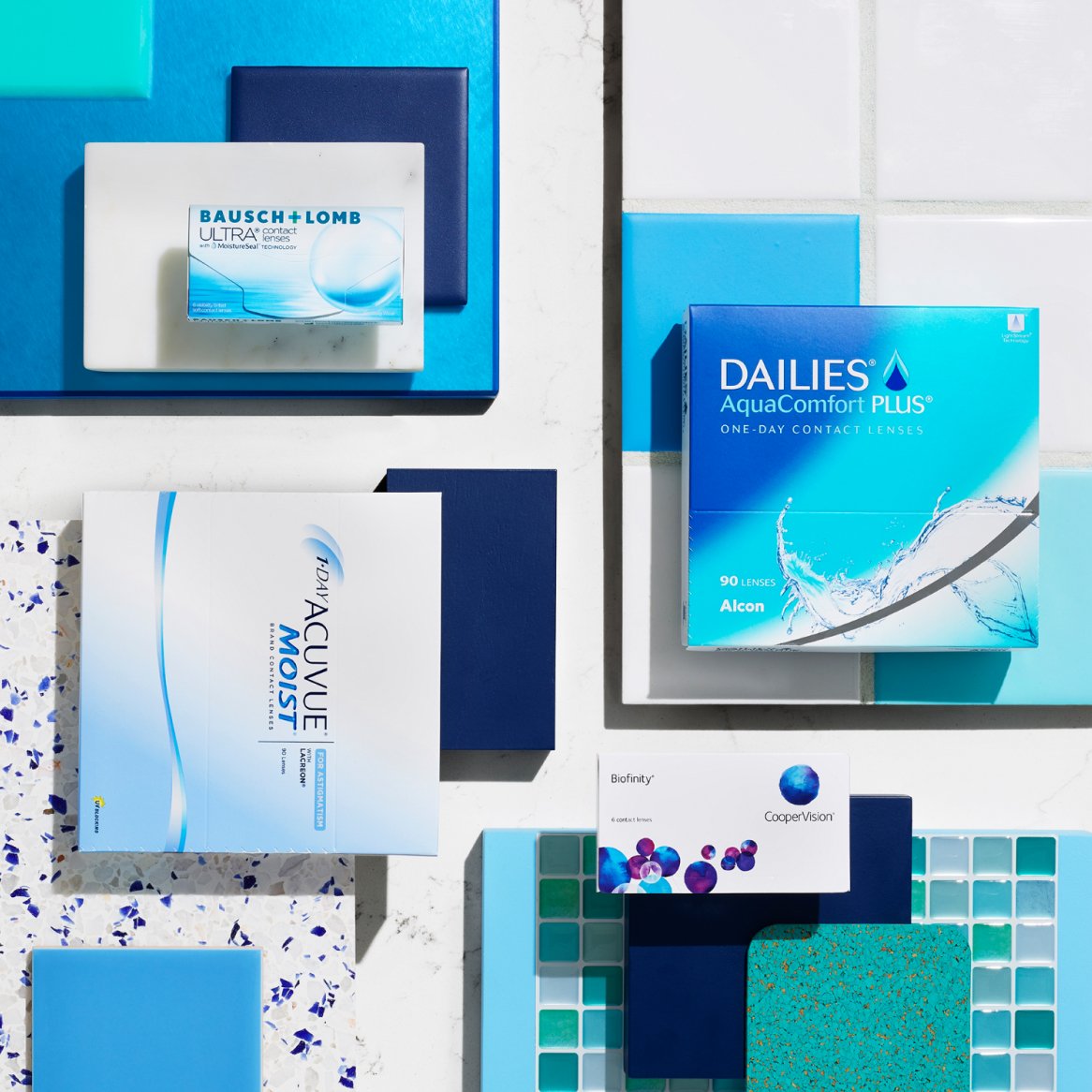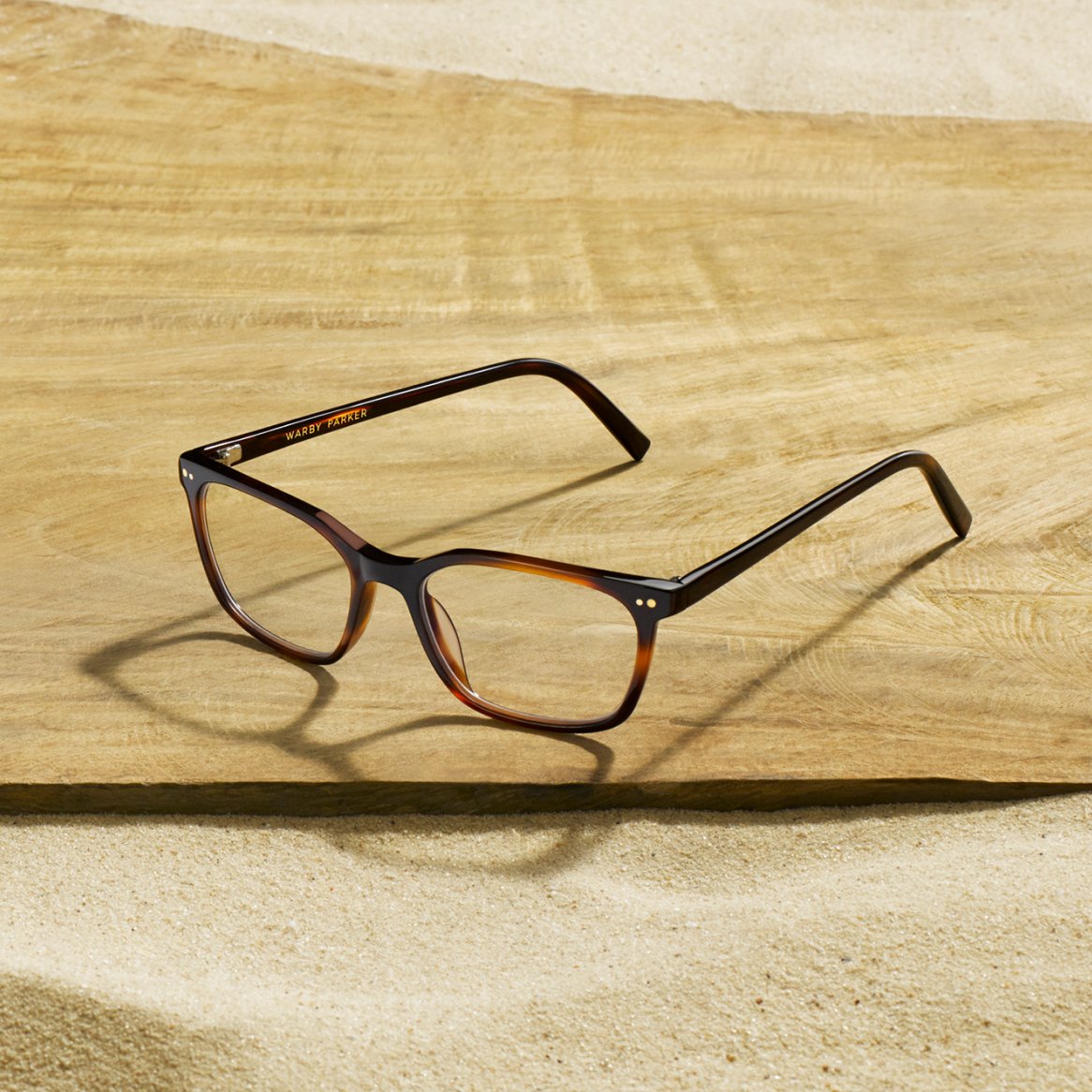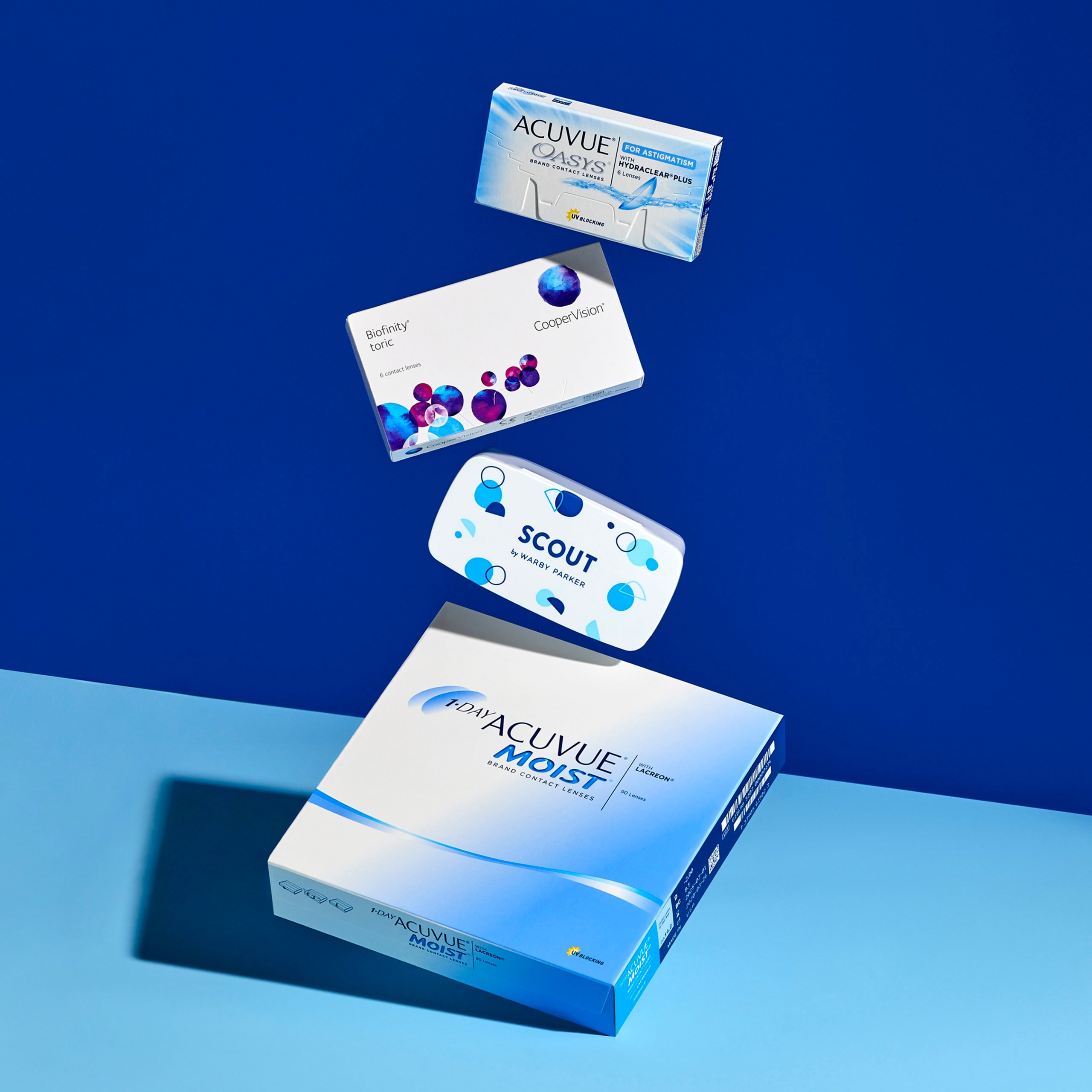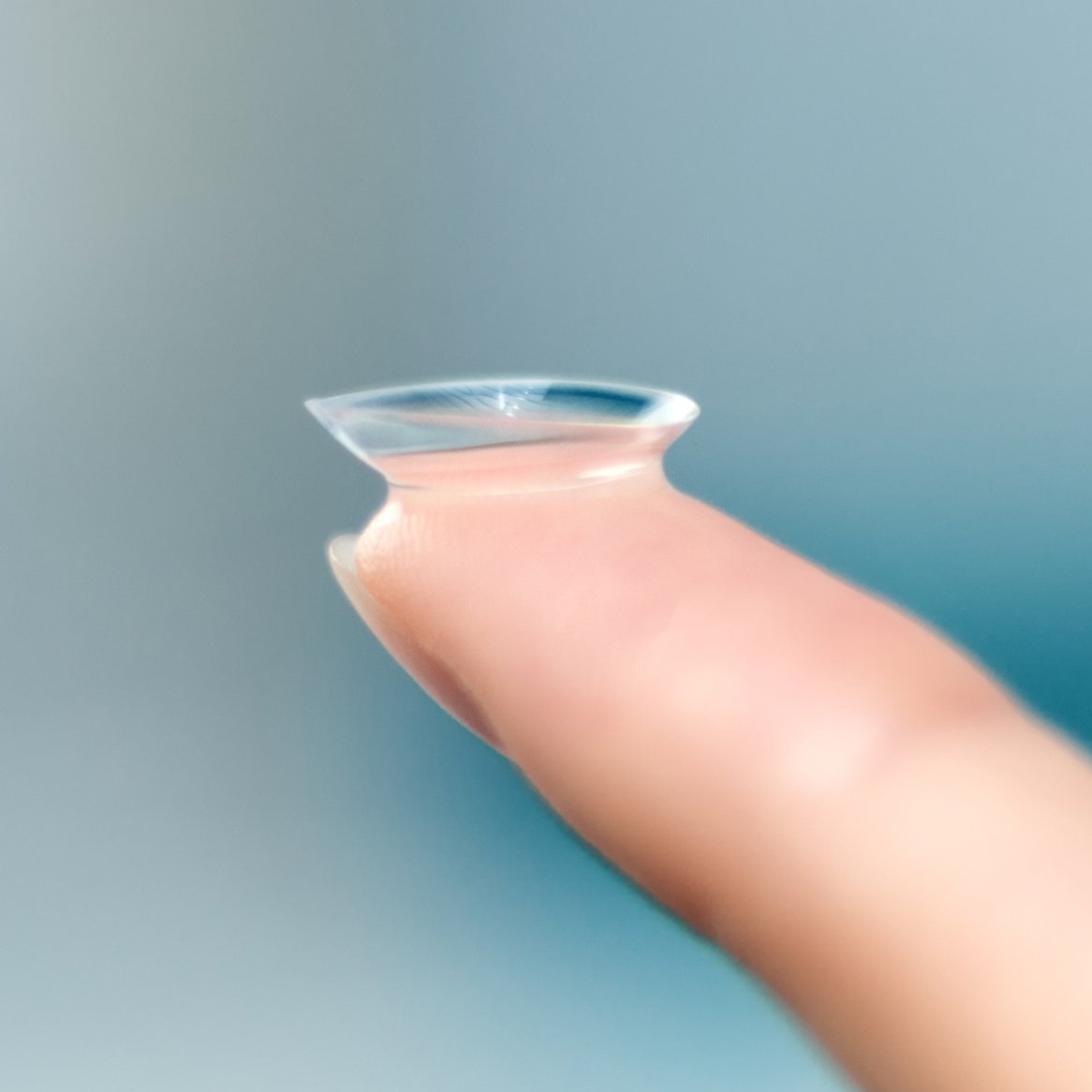Contact lenses may seem like a recent invention, but their roots can actually be traced back to 1508. That’s when Leonardo da Vinci—the famous inventor, scientist, and artist—came up with the concepts that eventually led to the invention of contact lenses.
In this guide, we’ll take a look back at some major milestones in the evolution of contact lenses as we know them today. We’ll even discuss some contact lens technologies that could be on the horizon.
The Evolution of Contact Lenses: How Did We Get Here?
DaVinci’s Early Concept of Contact Lenses (1508)
We don’t actually know the first time someone thought of a contact lens but we do have Leonardo da Vinci’s sketches of how vision could be corrected by placing a substance on the eye.
In his sketches, da Vinci showed how opening an eye in a glass of water could correct vision. Then he took that idea a step further by suggesting that a water-filled dome, much like a contact lens, could be worn over the eye.
Early Ideas Lead to Prototypes (1600s–1800s)
Some early ideas refined da Vinci’s concepts and led to several contact lens prototypes.
- In the 1630s, French scientist and philosopher René Descartes came up with an idea for a glass tube filled with water and fitted with a lens on the end. The tube would be held against the eye by hand, making it impractical. But the fact that the lens would be held only against the cornea rather than the entire eye was insightful.
- In 1801, a British scientist John Young created a glass contact lens prototype filled with water. He affixed it to his own eye using wax. Young’s prototype tested the theories of both da Vinci and Descartes.
- In 1827, a British astronomer Sir John Herschel improved on Young’s prototype by developing principles for improving the fit. This was to be done through improved grinding of the inside and outside curve of the lens, as well as creating a mold of the eye for a more accurate fit.
The First Glass Contacts (1887–1888)
- In 1887, F.A. Muller, a German maker of glass eyeballs, manufactured a glass contact lens that covered the entire eye. This lens wasn’t designed to correct vision. It was meant to protect a diseased eye (kind of like an eye patch).
- In 1888, Adolf Eugen Fick (A.E. Fick), a German physiologist, fitted the first glass contact lens onto patients. Like Muller’s design, the lens covered the whole eye, but it also corrected vision. He later made versions of the lenses that were corneal (covering only the cornea) rather than scleral (covering the entire eye surface). Fick’s invention is sometimes thought to be the first truly usable contact lens.
Plastic Contacts: A Revolution (1936–1938)
- In 1936, New York optometric scientist William Feinbloom created scleral contact lenses made with a glass portion covering the cornea and a plastic “skirt” around it. The plastic made the lenses more comfortable and easier to fit than the all-glass lenses.
- In 1938, Obrig and Mullen developed the first all-plastic scleral lenses using a new, highly superior material: polymethylmethacrylate (PMMA).
The First Plastic Corneal Contact Lenses (1948)
In 1948, Kevin Tuohy, a California optometrist, patented the first corneal contact lenses. Worn only on the cornea rather than on the entire surface of the eye, these were hard contact lenses made of rigid plastic—the PMMA material.
The First Soft Contact Lenses (1950s)
In the 1950s, chemist Otto Wichterle developed the first soft contact lenses made of hydrogel, a soft plastic. These flexible, water-absorbent lenses were more comfortable, and they turned out to be better for dry eyes and eye fatigue.
Contacts Enter the Modern Age: Soft Contact Lenses Are Refined (1970s)
In 1971, Bausch & Lomb manufactured the first U.S. commercial soft contacts. Later in the 1970s, two significant types of soft contact lenses were introduced to consumers: toric contacts and extended-wear contacts.
Toric Contact Lenses
In 1978, the Food and Drug Administration (FDA) approved toric contact lenses for the consumer market. These lenses were shaped in a way that corrected astigmatism along with the nearsightedness (myopia) and farsightedness (hyperopia) that contact lenses already addressed.
Extended-wear Contact Lenses
In 1979, CooperVision introduced the first extended-wear contact lenses. This made it possible for people to wear the lenses for longer periods of time than regular contact lenses.
More Recent Contact Lens Developments (1980s–Present Day)
Contact lenses have undergone rapid and significant enhancements since the beginning of the 1980s.
Bifocal Contacts (1981)
In 1981, Bausch & Lomb and Wesley Jessen introduced the first bifocal contact lenses. These let contact lens wearers enjoy the same benefits of bifocal or progressive eyeglasses to correct presbyopia (difficulty reading up close). Multifocal contact lenses are now also available.
Daily Disposable Contacts (1994)
In 1994, daily disposable contacts (“dailies”) were introduced to the market. These contacts are meant to be worn for a day and then thrown away. This reduces the occurrence of eye infections compared to wearing lenses that are worn, cleaned, and worn again.
Silicone Hydrogel Contacts (2001)
In 2001, contacts made from silicone hydrogel were approved for sale to U.S. consumers. These lenses allow more oxygen to reach the eye, making them more comfortable to wear for longer. Most soft contacts today are made with silicone hydrogel.
What’s Next for Contact Lenses?
With so many significant developments already made in the contact lens industry, it’s hard to imagine what improvements might still be to come. But some exciting contact lens technologies are underway.
Health monitoring: “Smart” contact lenses are being developed to analyze and monitor the wearers’ health and send the data to digital devices like a smartphone. The data can then be sent to a healthcare provider.
Drug Delivery: Scientists are working to expand the use of contact lenses that deliver medication directly to the eye. Contacts used to treat allergies have been developed and are in use. But soon (we hope), drug delivery technology may be used to more easily and conveniently treat a greater variety of eye conditions.
What else might the future of contact lenses hold? Only time will tell. In the meantime, you can stay current by keeping up with regular eye exams to hear the latest from your eye doctor.

